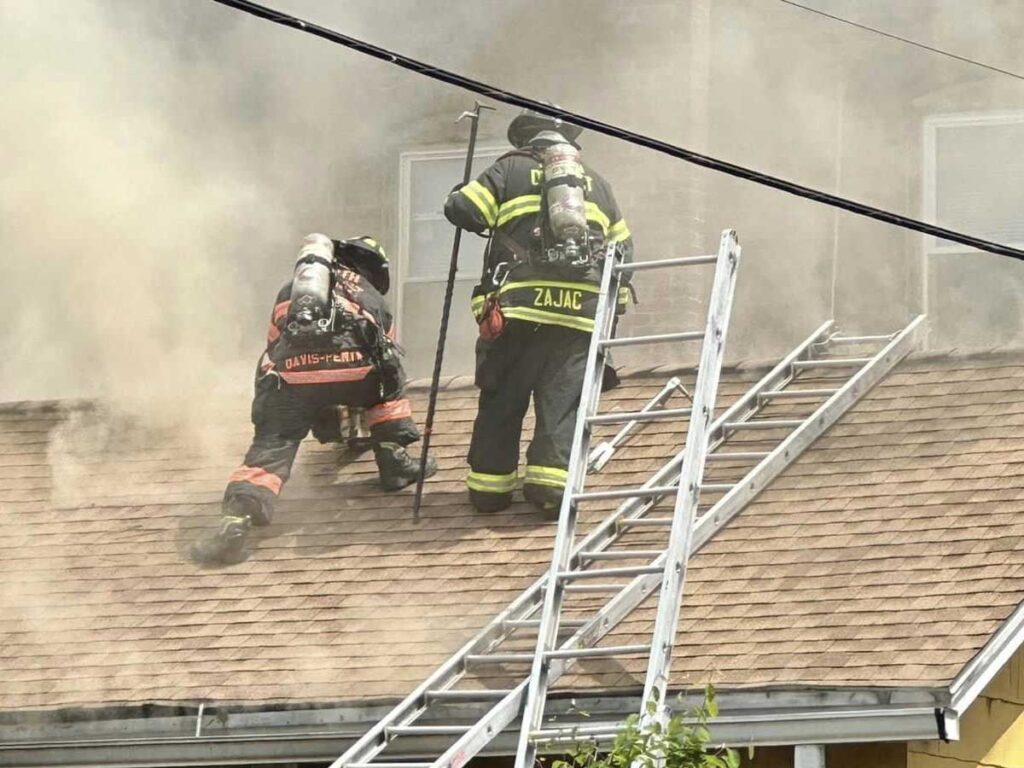
By AB Turenne
Photos by author
One of the most recognized tools of the firefighting trade is the halligan hook, also known as the New York roof hook. It was developed in the 1950’s by then-Deputy Fire Chief Hugh Halligan of the Fire Department of New York, who is more commonly known as the creator of the halligan bar.
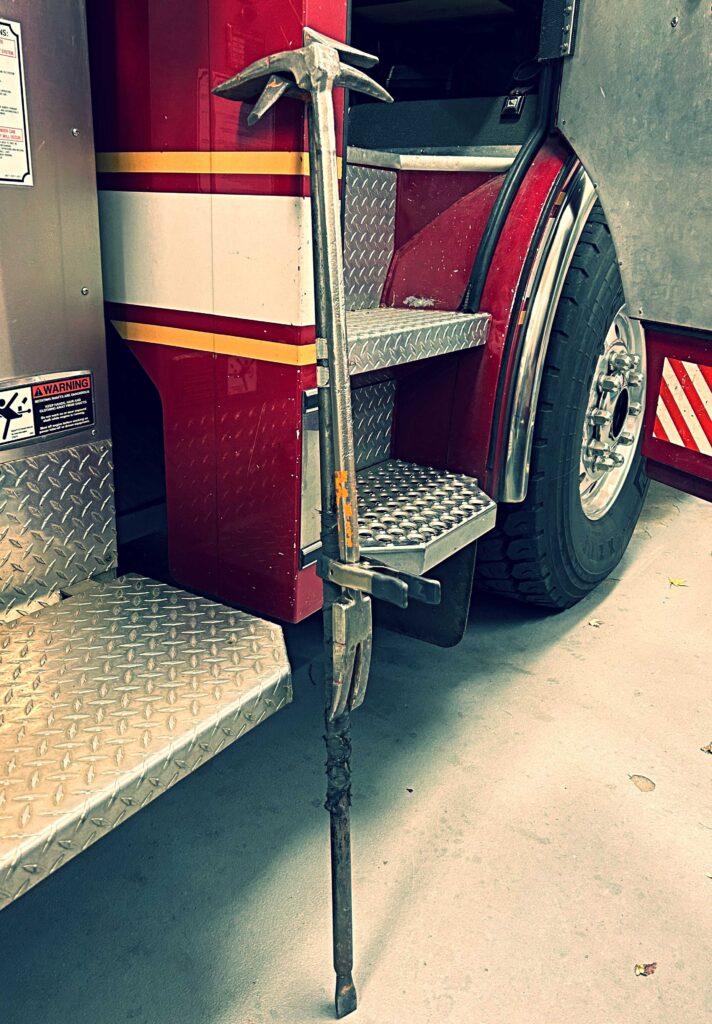
The halligan hook is used throughout the fire service while performing truck company operations such as horizontal and vertical ventilation and pulling and prying while looking for extension during overhaul. It consists of a six-foot shaft with two triangular ends that are fixed in opposite directions and form at a 45° angle and a 95° angle.
With the combined length of the tool along with its specifically designed end, the halligan hook has proven to be highly effective, given its reach and ability to pull and pry ceiling coverings (gypsum board, plaster, etc.) and rooftop sheathing.
Although the halligan hook is predominately used for truck company operations, it is being found more often now on calls for service as part of a tool complement (married with a halligan bar) and used for forcible entry in addition to ventilation and overhaul.
In this short training article, we are going to take the halligan hook from the rooftop and implement it into rapid intervention team (RIT) operations by discussing four methods of using the hook to assist with removing a down firefighter.
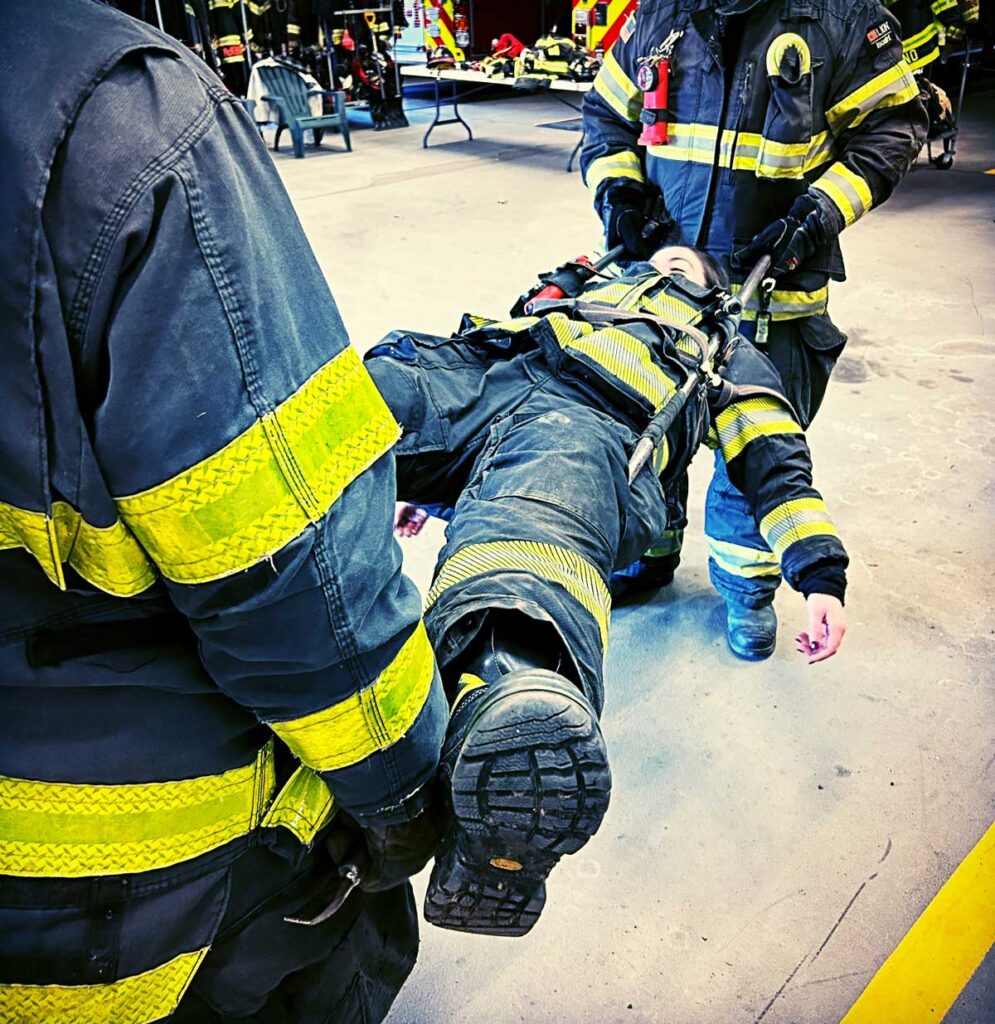
1. Creating a Litter
Use two halligan hooks and the existing frame/straps of the down firefighter’s self-contained breathing apparatus (SCBA) to create an effective and efficient means of converting the hooks into a portable litter. This allows for two firefighters to lift and carry the down firefighter up and over obstacles or void spaces in the floor, and can used as a rapid means of egress up or down a set of stairs.
After confirming the down firefighter’s air supply and silencing their personal alert safety system (PASS) device, feed the pry end of the hook through the shoulder strap and waist strap, starting at the left side of the firefighter’s head.
Continue next by doing the same from the firefighter’s right side of the head and synch down on all the straps and add a simple overhand knot.
The last step is to lift and place the lower extremities (legs) up and over the hook, as shown in the photograph below. Now, bending and utilizing your legs, you and your partner can grab the ends of the hooks and lift the downed firefighter as you would with a backboard or pole stretcher.
On a side note, with larger (obese or taller) firefighters, you will find it easier to avoid feeding through the waist strap since, in addition to their size, this could make it more difficult to lift their legs up and over the hook.
2. Horizontal Anchor Point
When met with conditions that warrant you to push or drag a down firefighter along an open floor space or a long hallway, a mechanical advantage combined with the halligan hook can add ease to the operation, as well as shave off time removing the down firefighter out of an immediately dangerous to life and health (IDLH) environment and into the hands of EMS personnel.
Two firefighters should position at the downed firefighter, providing adequate air supply, converting the down firefighter’s SCBA, and performing a rapid assessment on the extent of potential injuries to the firefighter. Fix a single pulley atop the SCBA shoulder straps via a short shot of 1-inch tubular webbing and an oversized carabiner. This task can be performed with limited visibly due to smoke conditions and with limited dexterity of a gloved hand by having the equipment staged as shown in the photo below.
At the doorway and egress point of the structure, stage another firefighter with the terminal end (figure 8 on a bight) connected to a halligan hook that is resting across the threshold in a secured fashion.
This simple mechanical advantage allows for a down firefighter to be hauled horizontally with limited personnel and equipment.

As the firefighter at the anchor point (halligan hook) hauls the line, the two other members with the down firefighter can push and drive in sync by placing the legs of the down firefighter over each of their shoulders. At the same time, they can monitor the down firefighter’s condition and move any obstacles, such as furniture or debris, out of the path of travel.
3. Vertical Anchor Point
Like the method above, a firefighter who falls through a floor can be hauled up in a vertical manner with the same equipment and setup, however the hauling would require the use of multiple firefighters from the floor above.
If the firefighter who fell through the void space to the floor below is conscious and uninjured, the mechanical advantage can be passed down to them and connected to the member’s rescue harness or by simply capturing the front of the two shoulder straps.
Placing the halligan hook/anchor point over a hole or void space creates a means for the terminal end to be anchored from above the down firefighter and, in cadence, those at the floor above can haul him or her up, out, and to safety.
Should the firefighter who fell through the floor be unable to perform the task, another firefighter to be lowered to the down member, if conditions allow. This method can then be done in a controlled manner using the same anchor point and mechanical advantage.
This method takes practice and should only be performed if the floor and surrounding area is not compromised from fire conditions.
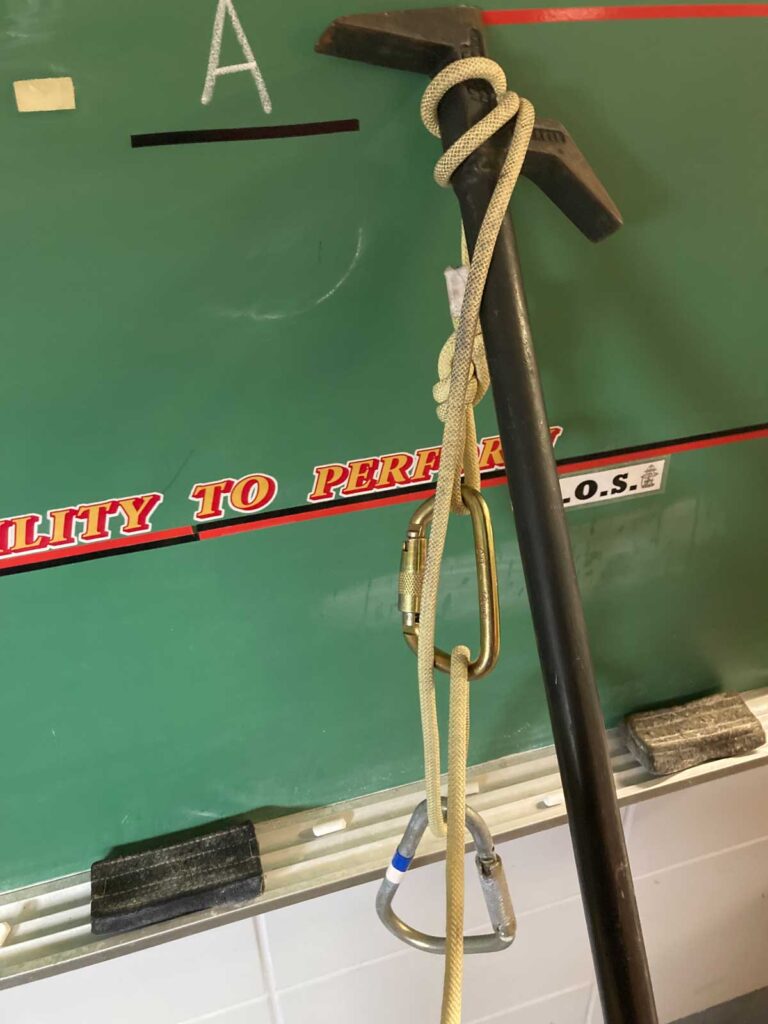
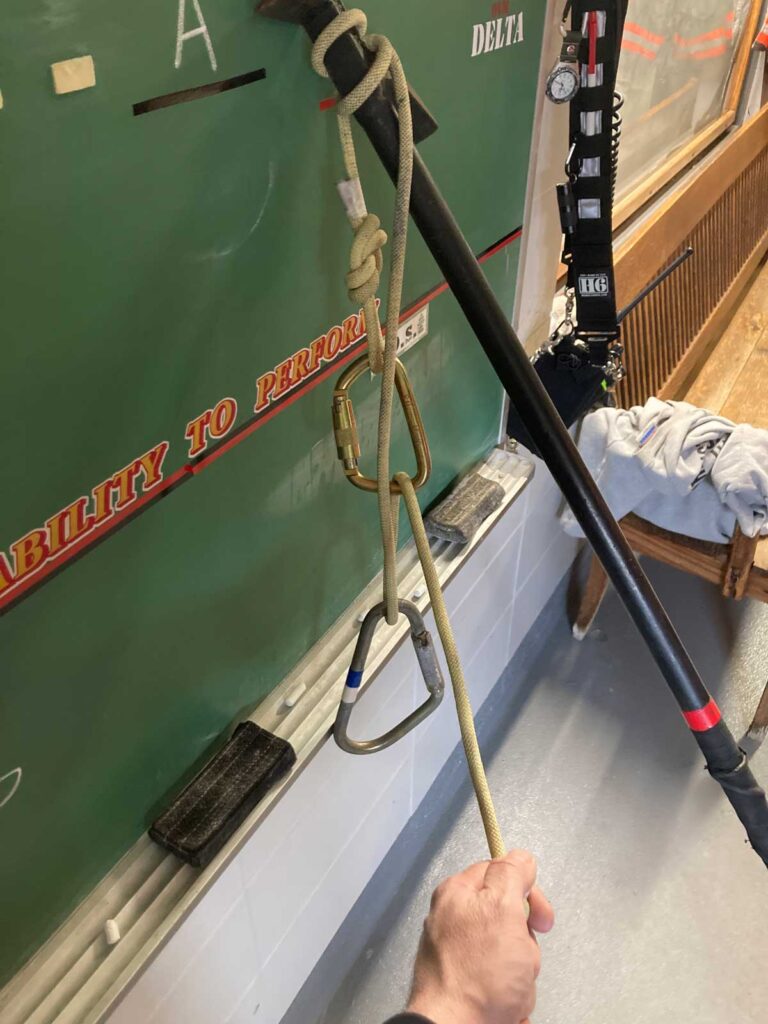
4. Up and Over
With typical household construction, windowsills are found to be three feet from the floor. When attempting to raise and lift a down firefighter up and over a windowsill to a ladder, the combined weight of the member’s body and gear coupled with a cumbersome position can make for an extremely difficult task, especially under duress.
With a halligan hook, a shot of 11mm cord and two carabiners, a mechanical advantage can be created and applied to assist with lifting the down firefighter up and over the sill and into the hands of a firefighter waiting on the top rungs of a thrown ladder.
To accomplish this, wrap the terminal end of the 11mm cord around the shaft where the two angled ends meet. Two or three wraps should be sufficient to secure the cord in place via friction once weight is added to the cord.
On the end of the terminal end (figure 8 on a bight), attach a carabiner. Next, feed the portion of the working end through the carabiner and capture it with an oversized carabiner.
In the ensemble I have in place, the oversized carabiner used as the mechanical advantage is from an out-of-service rescue Harness. The larger size allows me to manipulate the carabiner easier given the limited dexterity of a gloved hand and can be fed through the rear of the shoulder straps of an SCBA much quicker.
With the six-foot halligan hook resting on an angle against the window frame, one firefighter can pull the 11mm cord down and assist with lifting the down firefighter off the floor while another firefighter guides him or her to the top of the sill and out to awaiting firefighters.
Practice multiple ways to swiftly and safely remove a down firefighter from an IDLH environment and capitalize on the current equipment at your disposal. This training will ultimately make you and your crew a valuable resource should an incident warrant the need for RIT response.
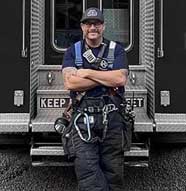
AB Turenne is a 25-year veteran of the fire service and is the captain of training and safety with a career department in Middlesex County, Connecticut. He is a certified Level III Fire Service Instructor, and a graduate from the master of public administration program at Anna Maria College.

